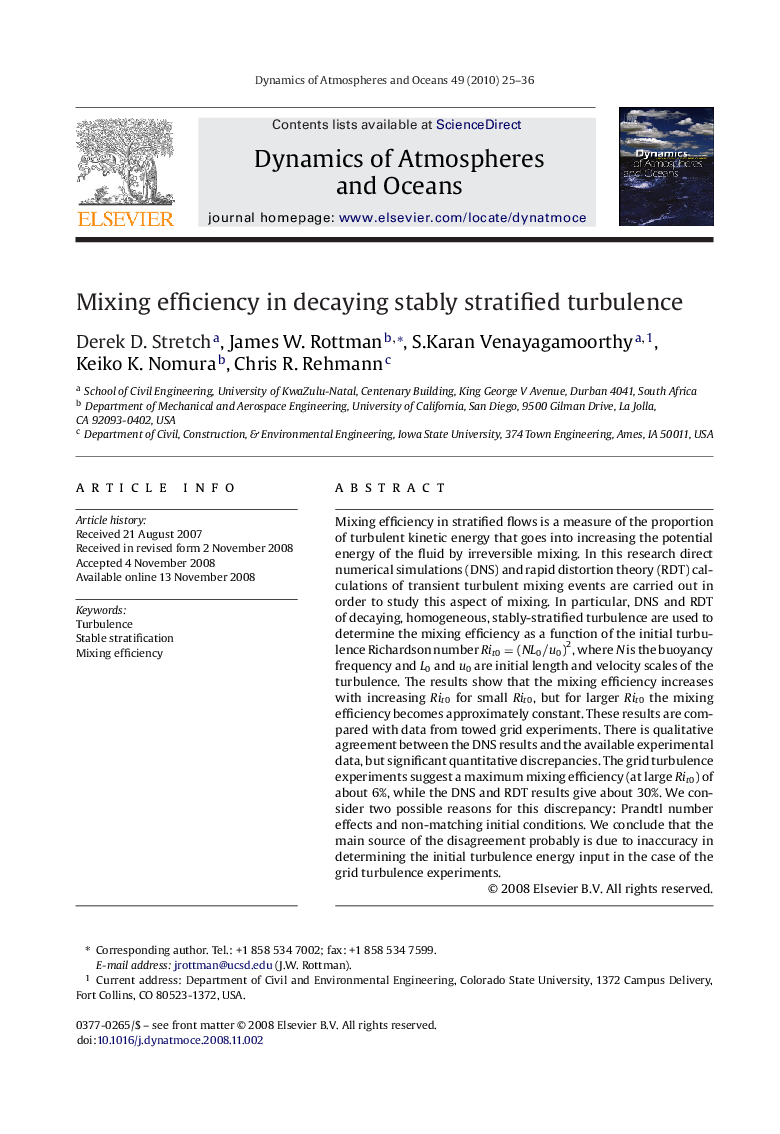| Article ID | Journal | Published Year | Pages | File Type |
|---|---|---|---|---|
| 4674216 | Dynamics of Atmospheres and Oceans | 2010 | 12 Pages |
Mixing efficiency in stratified flows is a measure of the proportion of turbulent kinetic energy that goes into increasing the potential energy of the fluid by irreversible mixing. In this research direct numerical simulations (DNS) and rapid distortion theory (RDT) calculations of transient turbulent mixing events are carried out in order to study this aspect of mixing. In particular, DNS and RDT of decaying, homogeneous, stably-stratified turbulence are used to determine the mixing efficiency as a function of the initial turbulence Richardson number Rit0=(NL0/u0)2Rit0=(NL0/u0)2, where N is the buoyancy frequency and L0L0 and u0u0 are initial length and velocity scales of the turbulence. The results show that the mixing efficiency increases with increasing Rit0Rit0 for small Rit0Rit0, but for larger Rit0Rit0 the mixing efficiency becomes approximately constant. These results are compared with data from towed grid experiments. There is qualitative agreement between the DNS results and the available experimental data, but significant quantitative discrepancies. The grid turbulence experiments suggest a maximum mixing efficiency (at large Rit0Rit0) of about 6%, while the DNS and RDT results give about 30%. We consider two possible reasons for this discrepancy: Prandtl number effects and non-matching initial conditions. We conclude that the main source of the disagreement probably is due to inaccuracy in determining the initial turbulence energy input in the case of the grid turbulence experiments.
